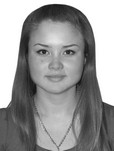Boxers’ skills- and age-specific functionality express tests
Фотографии:
ˑ:
PhD, Associate Professor R.M. Yamileva1
PhD, Associate Professor A.V. Danilov1
Dr.Biol., Professor E.Sh. Shayakhmetova2
D.R. Yagudin3
I.S. Makhmutov3
1M. Akmullah Bashkir State Pedagogical University, Ufa
2South-Ural State University (National Research University), Chelyabinsk
3Bashkir State University, Ufa
Competitive performance nowadays is largely determined by the athlete’s functionality rates. The study was designed to analyze benefits of the ultra-slow physiological process express tests for boxers’ skills- and age-specific functionality ratings, with a correlation analysis of the cerebral omega potential versus psychomotor functionality test data. Sampled for the testing experiment in the training and education process were 102 boxers qualified Class I (n=36), Candidate Masters of Sport (n=38) and Masters of Sport (n=28). Psychomotor functionality of the sample was tested by Sport Psycho-physiologist and NS-PsychoTest systems; and the ultra-slow physiological process was rated by Shch4313 system that ensures discrete readings of the cerebral omega potential in a multi-voltmeter mode. Analysis of correlations of the psychomotor functionality test rates with cerebral omega potential values showed that growth within the optimal range of -20mV to -39mV is associated with improvements in the psychomotor functionality test rates. The study data demonstrated that the bioelectric phenomena constitute a critical part of the neuro-physiologic processes being closely related with the psychomotor activity; and gave us the grounds to recommend the discrete cerebral omega potential tests as a basis for the boxers’ skills- and age-specific functionality and body reserve capacity express tests.
Keywords: express tests, psychomotor activity rates, ultra-slow physiological process, cerebral omega-potential, boxers, training process.
References
- Ilyukhina I.A., Zabolotskikh I.B. Fiziologicheskie osnovy razlichiy ustoychivosti organizma k submaksimalnoy fizicheskoy nagruzke do otkaza u zdorovykh lits molodogo vozrasta [Physiological basis of differences in submaximal physical exercise tolerance in healthy young people]. Fiziologiya cheloveka [Human physiology]. 2000. no. 3. pp. 92-99.
- Kozhevnikova O.A. Ratsionalny trenirovochny rezhim zanyatiy dlya yunykh bokserov raznogo urovnya fizicheskogo razvitiya i fizicheskoy podgotovlennosti [Adequate training mode for junior boxers of different levels of physical development and physical fitness]. V mire nauchnykh otkrytiy. 2017. v. 9. no. 1-2. pp. 19-24.
- Minullin A.Z. Psikhofiziologicheskie osobennosti adaptatsii yunykh bokserov k sorevnovatelnomu stressu [Psychophysiological characteristics of junior boxers' adaptation to competitive stress]. PhD diss.. Chelyabinsk, 2013. 143 p.
- Muftakhina R.M. Psikhofiziologicheskiy status bokserov razlichnykh sportivnykh kvalifikatsionnykh grupp vozrastnom aspekte [Psychophysiological status of boxers of various sports qualification groups in age aspect]. PhD diss.. Chelyabinsk, 2011. 138 p.
- Prikaz Ministerstva sporta Rossiyskoy Federatsii ot 20 fevralya 2017 g. # 108 «Ob utverzhdenii Polozheniya o Edinoy vserossiyskoy sportivnoy klassifikatsii» (v redaktsii prikazov ot 1 iyunya 2017 g. # 479, ot 16 fevralya 2018 g. # 143, ot 26 oktyabrya 2018 g. # 913) [Order of the Ministry of Sport RF February 20, 2017 No. 108 “On Approval of the Regulations on the Unified Russian Sports Classification” (as amended by orders of June 1, 2017 No. 479, of February 16, 2018 No. 143, of October 26, 2018 No. 913)] [Electronic resource]. Available at: https://www.minsport.gov.ru/sport/high-sport/edinaya-vserossiyska/ (date of access: 25.03.2019).
- Reshetova Z.A. Psikhologicheskie osnovy professionalnogo obucheniya [Psychological foundations of vocational training]. M.: MSU publ., 1987. no. 5. pp. 154-160.
- Khaervarina A.F., Lintvarev A.L., Ogurechnikov D.G. Osobennosti reaktivnosti psikhofiziologicheskikh kharakteristik bokserov 13-14 let [Features of reactivity of psycho-physiological characteristics of 13-14 year-old boxers]. Ekstremalnaya deyatelnost cheloveka. 2018. no. 2 (45). pp. 65-69.
- Shayakhmetova E.Sh. Omega-potentsial golovnogo mozga kak ekspress-otsenka fizicheskoy rabotosposobnosti bokserov vysokoy kvalifikatsii [Omega-potential of the brain as rapid assessment of physical work capacity of elite boxers]. European Social Science Journal. М., 2014. 6 (2). v. 1. pp. 405-409.
- Albouza Y., Chazaud P., Cremieux J., Wach M. The values of young boxers screened by schwartz,s model. STAPS. 2016. no.1. P. 97 – 112.



